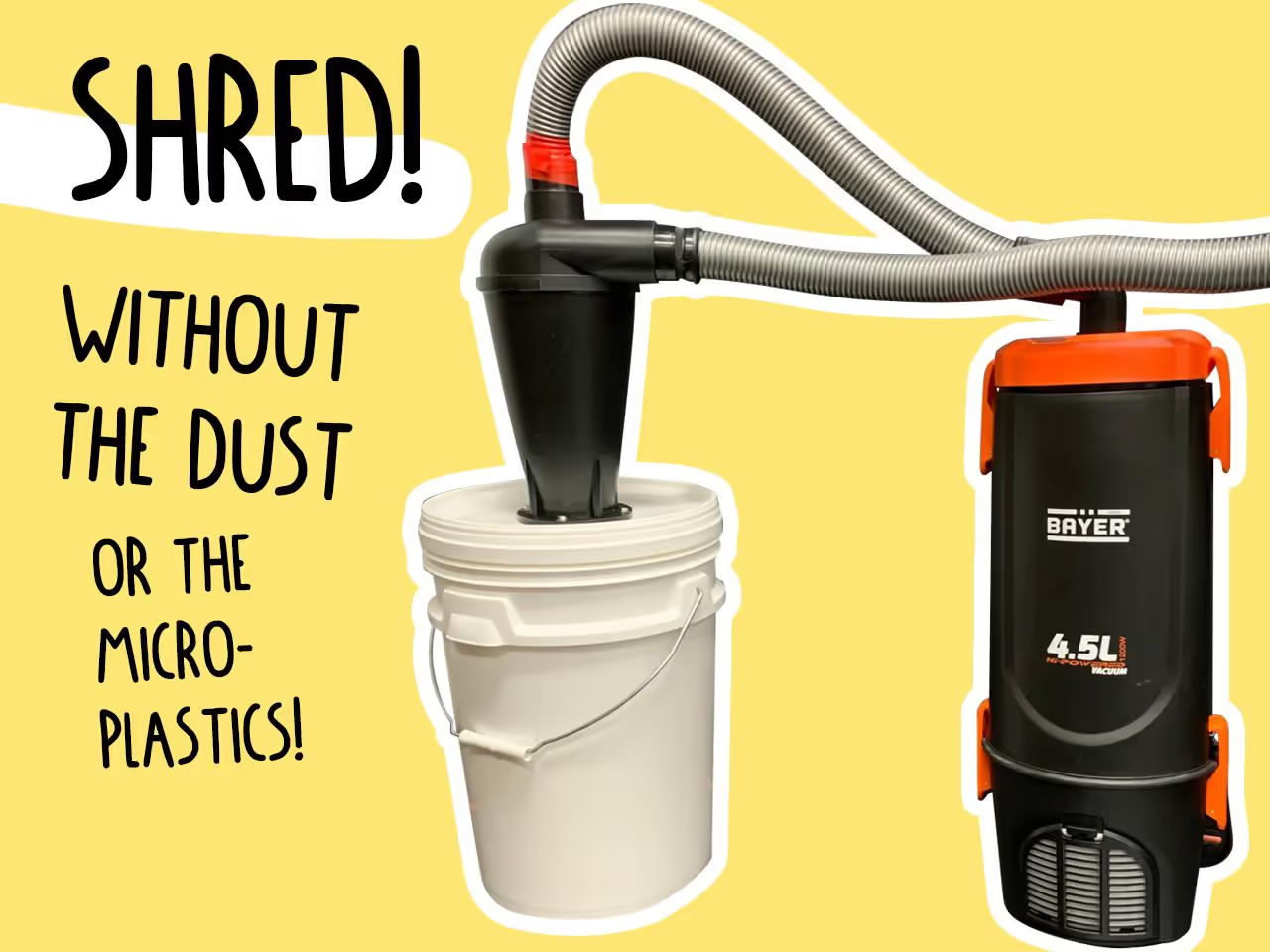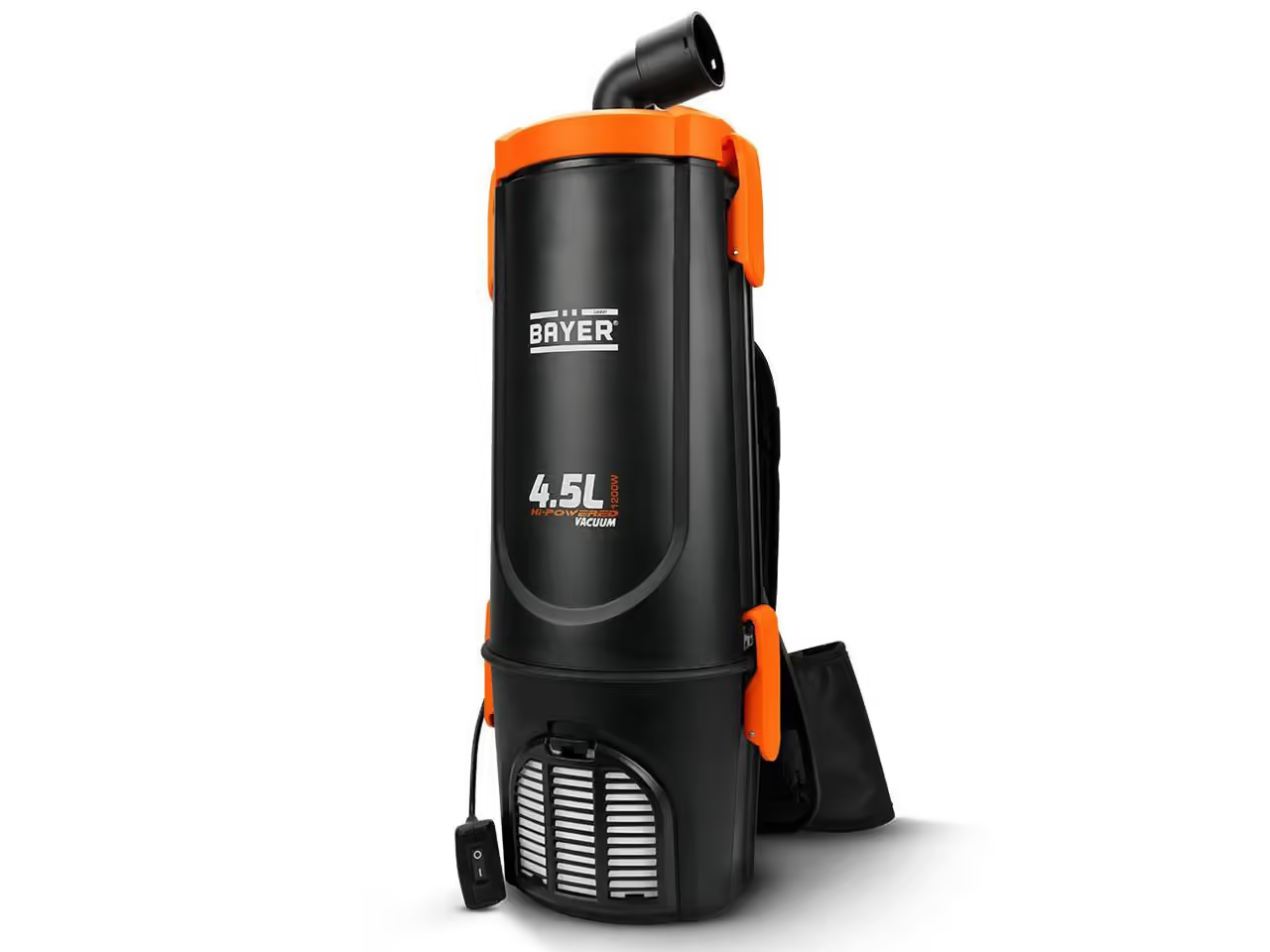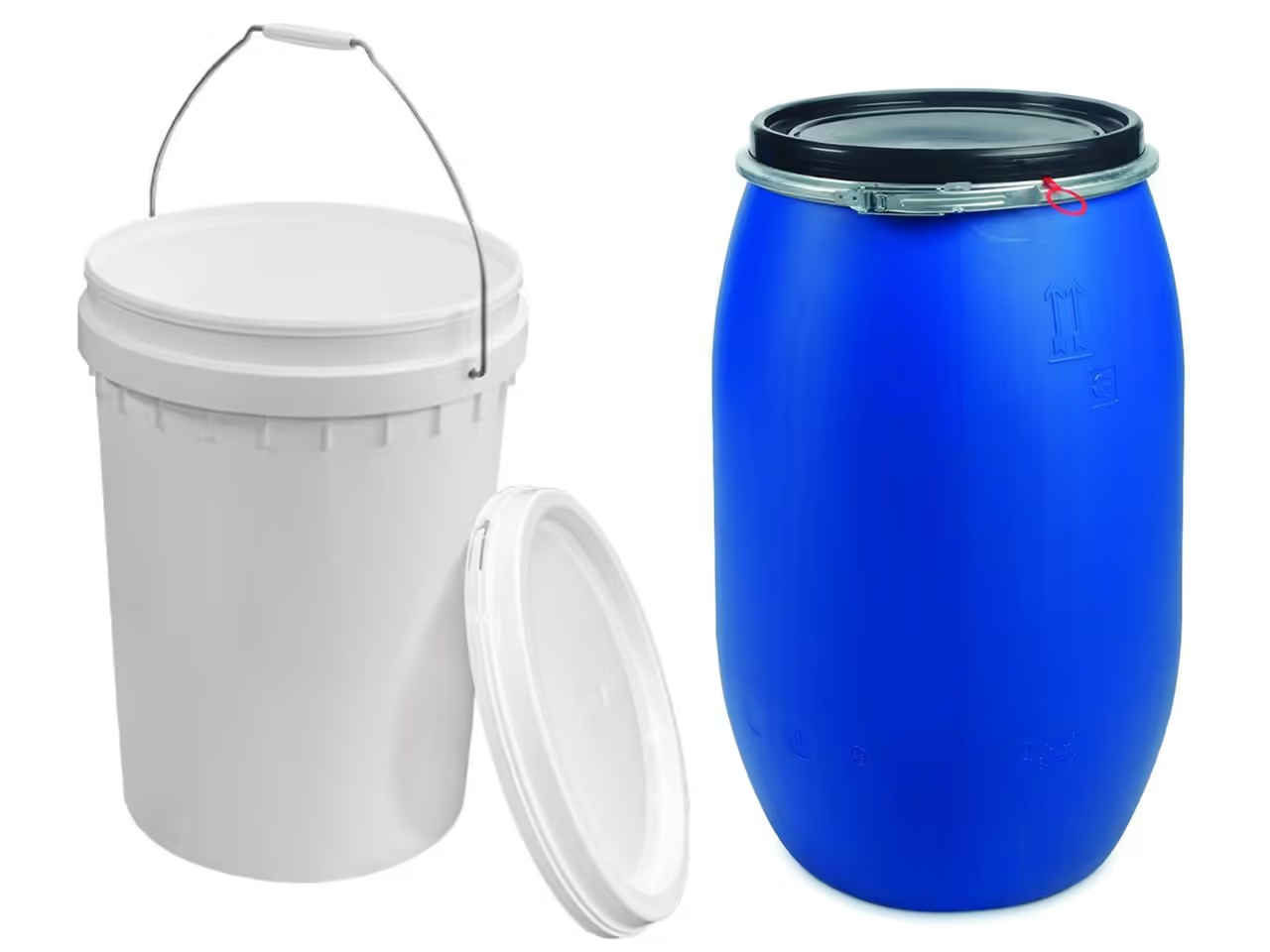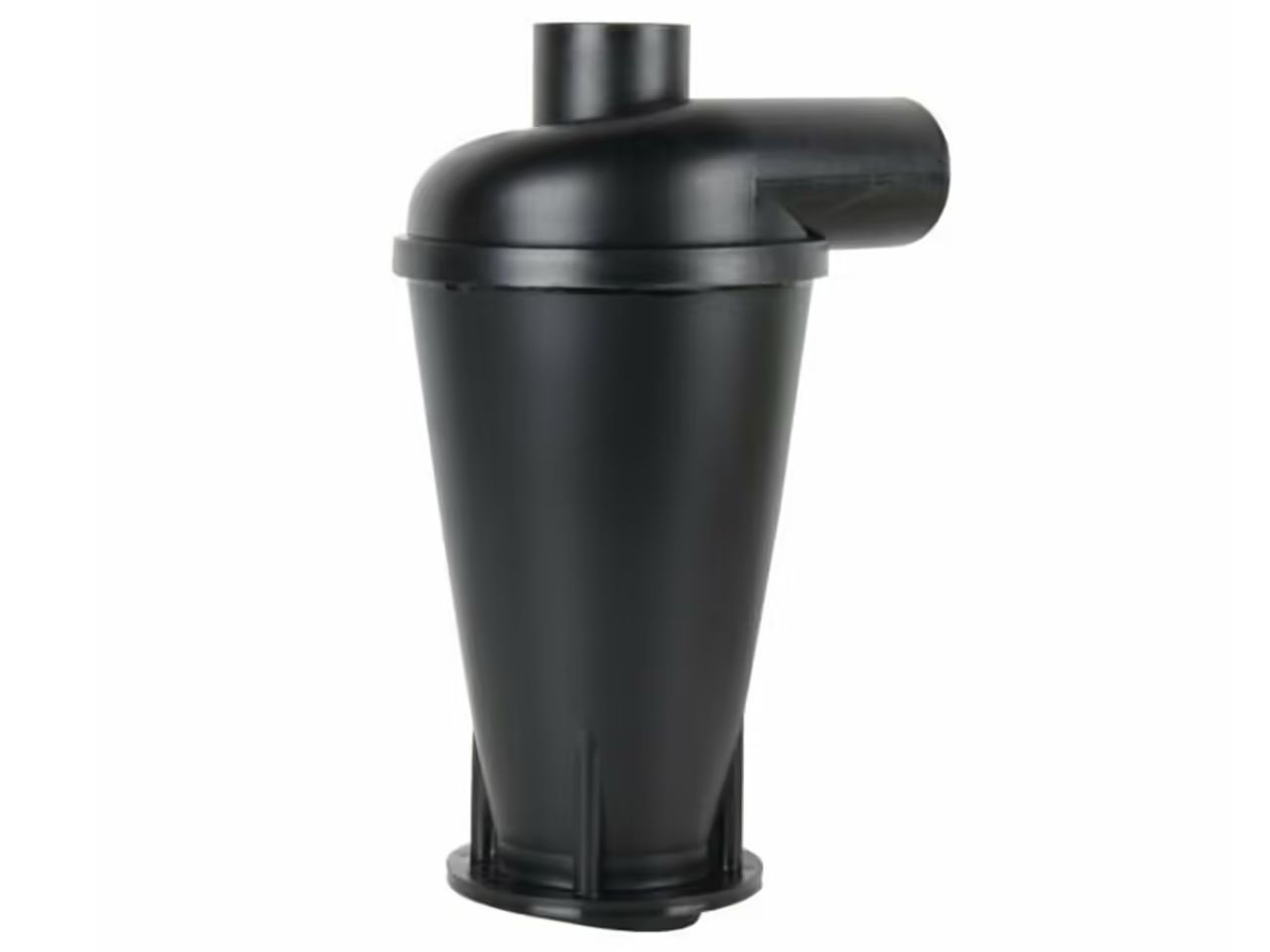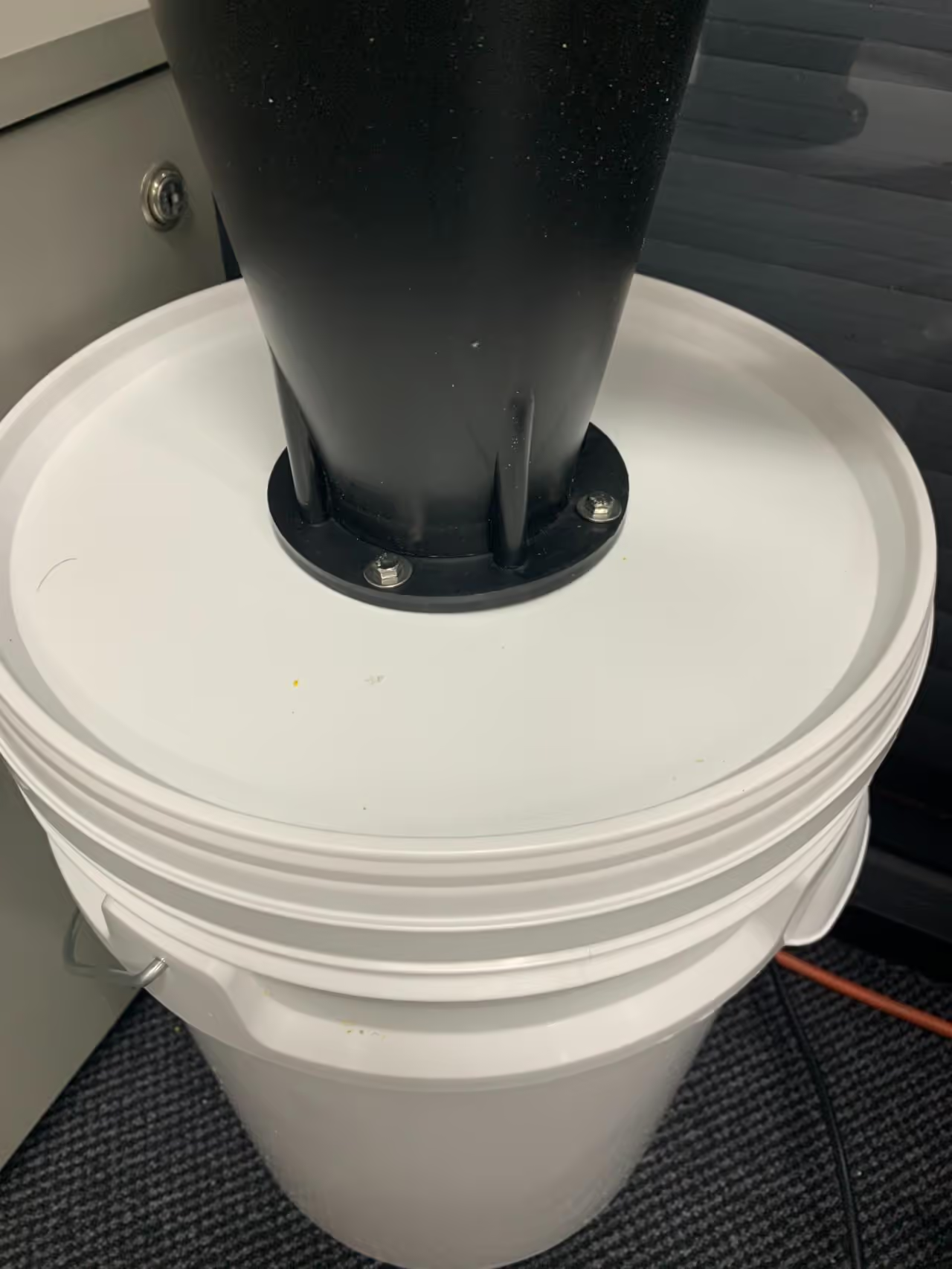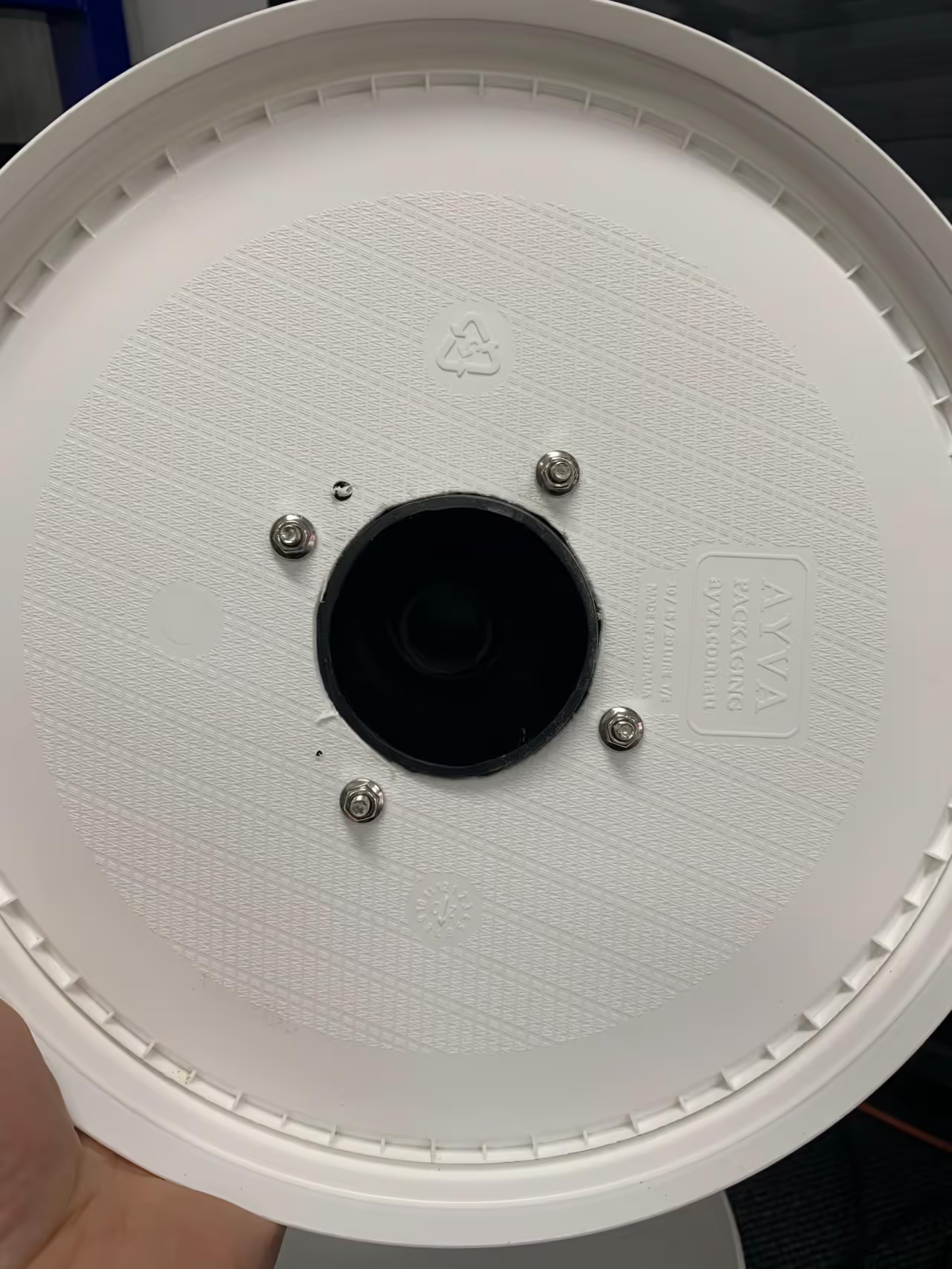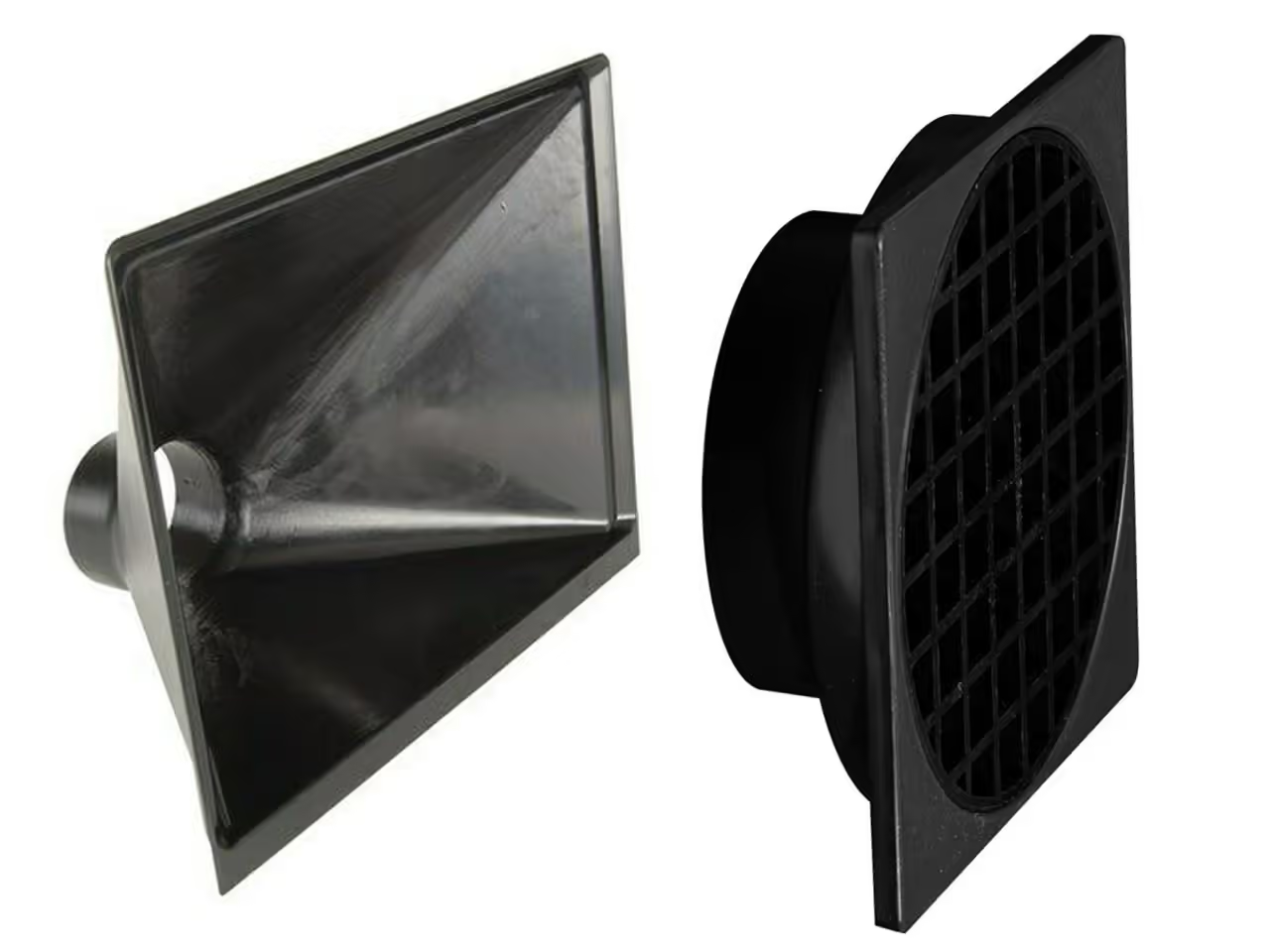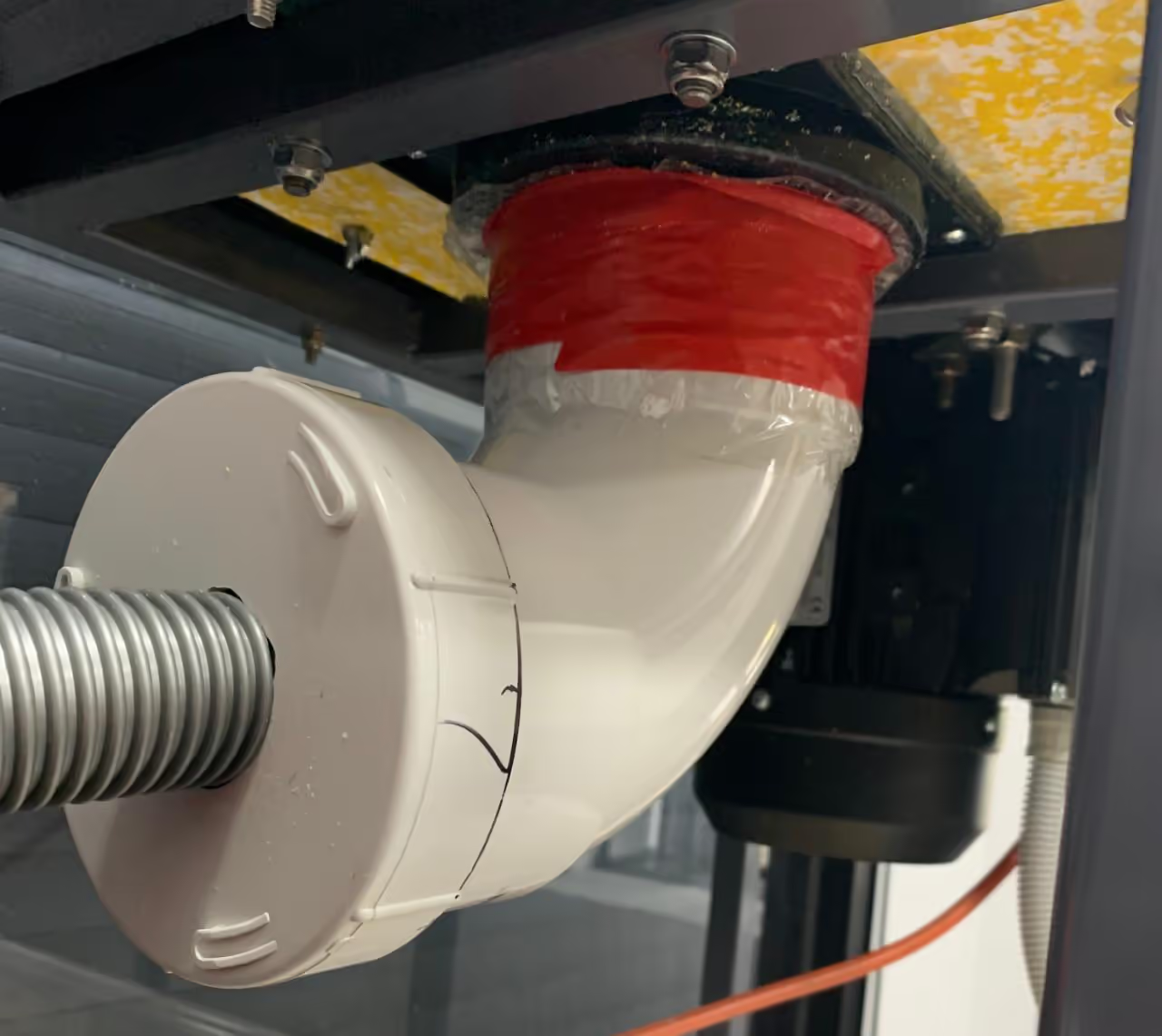Shredder Upgrade for Dust Minimization
Reduce micro-plastic and dust from your shredder with this effective upgrade. It also simplifies cleaning when changing colors or materials.
Required Components:
- Vacuum
- 5.3-gallon (20L) Bucket
- Cyclone Dust Collector
- Funnel
Table of Contents
-
Vacuum Selection Guide
The vacuum is the most critical component of this setup. You may use an existing vacuum or acquire one suitable for your needs.
We opted for a backpack vacuum. In our shared, small workshop, we required a compact, quiet, yet powerful device. As our vacuum operates for extended periods, we decided on a model designed for commercial use.
Our selected vacuum: Bayer BP45L 1200W Hi-Powered 4.5L Tank Dry Backpack Vacuum.
-
This type of bucket is common and generally easy to find secondhand. Choose one in good condition with a removable lid. A round bucket is preferable to a square container for this purpose.
-
Dust Cyclone Overview
Dust cyclones effectively remove over 99% of dust and debris from the airflow, preventing accumulation in the vacuum. Our Dust Extractor has consistently operated without any plastic particles reaching the vacuum.
The cyclone kit includes a cutting template, instructions, nuts, bolts, and connection pieces. It is available for approximately $40 AUD ($26 USD) here.
For a cost-effective or DIY approach, consider this tutorial.
-
To capture the shredded plastic from the sieve to the vacuum hose, an airtight funnel is essential. You may use a purpose-built funnel, a 3D-printed design, or a D Square grate with a plumbing pipe. A suitable option is available at: www.timbecon.com.au/dust-extractor-hood-large-big-gulp
-
Cyclone Assembly
- Position the template (provided with the cyclone) centrally on the lid.
- Mark and drill the bolt holes.
- Mark and cut the center hole.
- Attach the cyclone using the provided nuts and bolts (refer to images in Step 3).
Funnel Installation
- Attach the funnel directly below the shredder sieve. A D Square grate, a leftover plumbing pipe, and a hole cut in the cap were used (refer to image in Step 4).
Vacuum Connection
- Cut the vacuum pipe in half.
- Use one half to connect the top outlet of the cyclone to the vacuum.
- Connect the side inlet of the cyclone to the funnel beneath the shredder.
Tools & Equipment
- Bayer BP45L 1200W Backpack Vacuum (sydneytools.com.au)
- 5.3-gallon (20L) round bucket (secondhand recommended)
- Cyclone Dust Collector kit (~~~~link~~~~)
- Airtight funnel (~~timbecon.com.au~~)
Recommended Suppliers
- Cyclone DIY tutorial (link)
- Dust cyclone pre-built kit (link)
- Backpack vacuum (commercial-grade models from Sydney Tools)
- Large dust hood (D Square grate option from Timbecon)
Hardware Components
- Removable-lid bucket (round shape preferred)
- Plumbing pipe (for custom funnel setups)
- Nuts/bolts (included with cyclone kit)
- Cutting template (included with cyclone kit)
